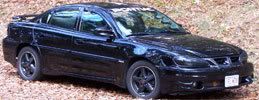Originally posted by ForcedFirebird
View Post
YOU would never get under that F-Body... but in the absence of telling people NOT to do so...there is always someone who may not understand the inherent danger in doing so. I don't think I have ever seen you getting any safety issues wrong. As for me... I believe that women and children may be careless...but not men...and so I insist on reminding the folks interested in my posts to keep their wits about them and not engage in anything that might cause them or others to be harmed or killed.




 rofl
rofl

Comment